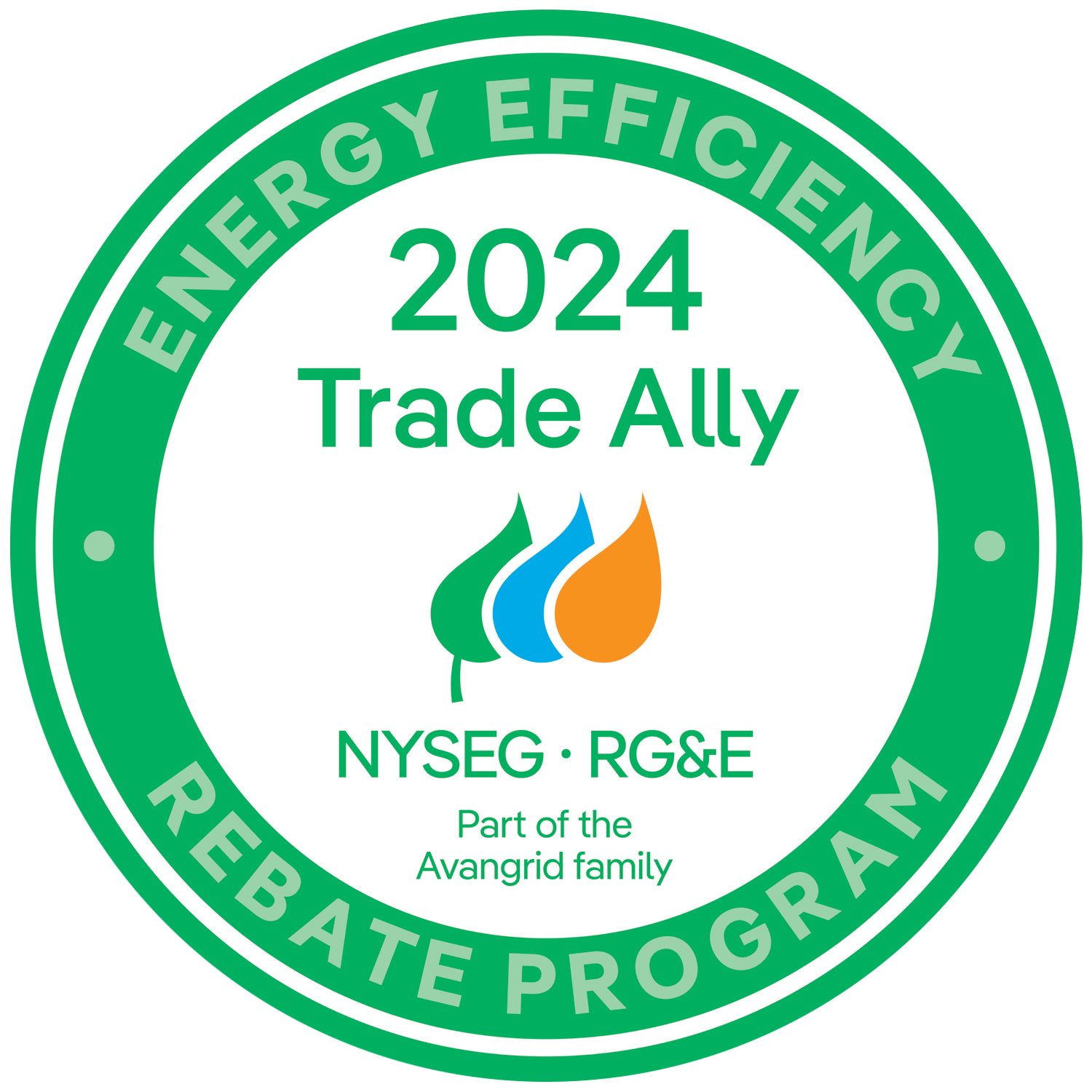A | The key factors that influence the cost of installing a solar panel and battery backup system are:
The return on investment (ROI) for a commercial solar system can be as low as 3-5 years, making it a smart financial decision for many businesses. |
A | The amount you can save on your electricity bills by installing solar panels depends on various factors, including the size of the solar system, your energy consumption, local electricity rates, and the efficiency of the solar panels. Here are some key considerations:
To get a more accurate estimate of potential savings, you may want to consult with Buffalo Solar. They can provide a customized analysis based on your business's unique circumstances and the most up-to-date information on incentives and electricity rates in your area. |
A | Solar panels typically have a lifespan of 25 to 30 years or more. However, their efficiency may gradually decline over time. Regular maintenance and monitoring can help optimize performance. Battery backup systems, including lithium-ion batteries commonly used with solar installations, usually have a lifespan of 10 to 15 years. The actual lifespan can be influenced by factors such as usage patterns, depth of discharge, and environmental conditions. This means that investing in solar and battery backup can provide a reliable source of energy for your business for decades to come. |
A | The amount of energy a solar panel and battery backup system can generate for your business is influenced by various factors. Here are some key considerations:
To get a more accurate estimate of the energy generation potential for your business, consider consulting with Buffalo Solar. They can conduct a site assessment, taking into account your specific location, energy needs, and other relevant factors. A professional assessment will provide more accurate and personalized insights. Even a small commercial solar system can generate enough energy to offset a significant portion of your energy usage. |
A | The installation process for a solar panel and battery backup system generally follows several key steps. The team at Buffalo Solar takes care of each stage to ensure a seamless experience for commercial customers. Here's an overview of the typical installation process:
It's important to have a professional and experienced team, like Buffalo Solar, to manage each step of the process and address any challenges that may arise. Their expertise ensures that the installation meets all necessary requirements and provides reliable solar energy and backup capabilities for commercial customers. |
A | The permits and regulations required for installing a solar panel and battery backup system can indeed vary based on your specific location, as regulations are often determined at the municipal or state level. It's excellent that your team at Buffalo Solar is knowledgeable about the requirements in the northeast and can assist with navigating the permitting process. Here are some common permits and regulations you may encounter:
Your team at Buffalo Solar will play a crucial role in guiding you through this process, ensuring that all necessary permits are obtained and that the installation complies with local regulations in the northeast. |
A | The maintenance requirements for a solar panel and battery backup system are generally minimal, but regular inspections and some routine tasks can help ensure the system's optimal performance and longevity. Consult with Buffalo Solar for a plan that best fits your needs. Here are common maintenance tasks for solar panel and battery backup systems:
Having a maintenance plan in place, as offered by Buffalo Solar, is crucial for the long-term success of your solar panel and battery backup system. Regular inspections and proactive maintenance can help identify and address issues before they impact system performance. Additionally, they contribute to the overall reliability and efficiency of the system, ensuring that your business can benefit from clean and reliable energy. |
A | The space required for installing solar panels and a battery backup system varies based on several factors, including the system size, the efficiency of the solar panels, and the capacity of the battery backup system. The characteristics of the available space, whether on the roof or the ground, also play a significant role. The team at Buffalo Solar can conduct a site assessment to provide specific details for your solar project. Here are key considerations:
By conducting a thorough site assessment, Buffalo Solar can provide you with a precise understanding of the space requirements for your solar panel and battery backup system. This assessment takes into account your energy needs, available space, and local regulations to design an efficient and compliant solar energy solution. |
A | During a power outage, a battery backup system can provide electricity to your business to keep critical systems running. This can be especially beneficial for businesses that rely on refrigeration or other equipment that requires a constant source of power. Without battery backup, power outages can cost businesses substantial amounts of money in lost revenue and productivity. During a power outage, a battery backup system serves as a crucial component to maintain electricity supply for your business. Here's what typically happens during a power outage with a battery backup system:
It's important to note that the effectiveness of a battery backup system during a power outage depends on its design, capacity, and maintenance. Regular testing and maintenance of the system ensure that it functions as intended when needed. Buffalo Solar will design a battery backup system that meets their specific needs and provides reliable power during outages. |
A | The warranty for a solar panel and battery backup system can vary based on the manufacturer, specific components, and the terms and conditions outlined in the warranty policy. Here are some general considerations: Solar Panel Warranty:
Battery Backup System Warranty:
Always consult the warranty documentation provided by the manufacturers of your specific solar panels and battery backup system to understand the terms, conditions, and coverage details associated with your particular equipment. Buffalo Solar also includes a workmanship warranty along with the warranties the manufacturer offers. |
A | Determining the right size of a solar panel and battery backup system for your business involves a comprehensive analysis of various factors. It's excellent that your team at Buffalo Solar can conduct a site assessment and provide a custom proposal. Here are key considerations in determining the appropriate size for your solar and battery system: Solar Panel System Sizing:
Battery Backup System Sizing:
Professional Site Assessment:
By combining these considerations and working closely with Buffalo Solar, you can determine the optimal size for both the solar panel and battery backup systems, creating a reliable and efficient energy solution for your business. |
A | Yes, it is common to connect solar panel systems, including those with battery backup, to the electrical grid. This type of system is known as a grid-tied solar system with battery backup. Here's how it typically works:
Connecting your solar panel and battery backup system to the grid enhances the flexibility and reliability of your energy setup. It provides the benefits of clean, renewable energy from solar panels while ensuring a continuous power supply through the battery backup system during grid outages. Working with experienced solar installers, like your team at Buffalo Solar, can help ensure a seamless integration and compliance with local regulations. |
A | Tax incentives and rebates for installing solar panels and a battery backup system can vary depending on your location and the specific programs available. Please note incentives may change. Federal Incentives (United States):
State and Local Incentives:
Utility-Specific Incentives:
Environmental Credits:
Federal and State Grants:
It's important to note that incentive programs are subject to change, and new programs may be introduced. Additionally, the availability of incentives can vary by region, and some programs may have specific eligibility criteria. It's highly recommended to consult with the team at Buffalo Solar to get detailed and specific information about the incentives and rebates available in your area. As part of our service offerings, we process the applications and ensure that you take advantage of all applicable financial incentives for your solar panel and battery backup system installation.
14. How do I monitor the energy produced and consumed by my solar panel and battery backup system?Monitoring the energy produced and consumed by your solar panel and battery backup system is essential for optimizing performance and understanding your energy usage patterns. Here are common methods for monitoring:
Solar Panel System Monitoring:
Battery Backup System Monitoring:
Integrated System Monitoring:
By regularly monitoring your solar panel and battery backup system, you can identify any issues promptly, optimize energy usage, and ensure that your system is operating at its full potential. installer or the Buffalo Solar can advise you of your system components to understand the available monitoring options and how to set up and access the monitoring features. |
A |
The environmental impact of installing a solar panel and battery backup system is generally positive, contributing to a more sustainable and low-carbon energy landscape. Here are key points to consider: Positive Environmental Impact:
|
A | Solar panels can be installed on various types of commercial roofs, but the feasibility and approach may vary depending on the roof material, structure, and other factors. Here are considerations for common types of commercial roofs:
Important Considerations:
Buffalo Solar can evaluate your roof and provide you with an engineered solution for your commercial roof. |
A | While solar panels are most efficient in direct sunlight, they can still generate power on cloudy days. Cloud cover reduces the amount of sunlight reaching the panels, which decreases their efficiency but doesn't eliminate power generation entirely. Modern solar panels are designed to capture diffused sunlight, allowing them to produce some electricity even in overcast conditions. However, the overall energy output on cloudy days will be lower compared to sunny days. To overcome the challenges posed by cloudy or snowy days in solar power generation, a well-designed system and strategic use of net metering can be implemented. Here are some considerations for system design and net metering to optimize solar energy production during adverse weather conditions: System Design Strategies:
Net Metering Strategies:Accumulate Credits During Sunny Days:
By combining effective system design strategies with thoughtful utilization of net metering, businesses can mitigate the impact of adverse weather conditions on solar energy production. The goal is to create a resilient and sustainable energy system that maximizes the benefits of solar power throughout the entire year. Consulting with a solar professional and working closely with your utility can help optimize the design and operation of your solar energy system. |

 NYSEG
NYSEG
.jpg)
